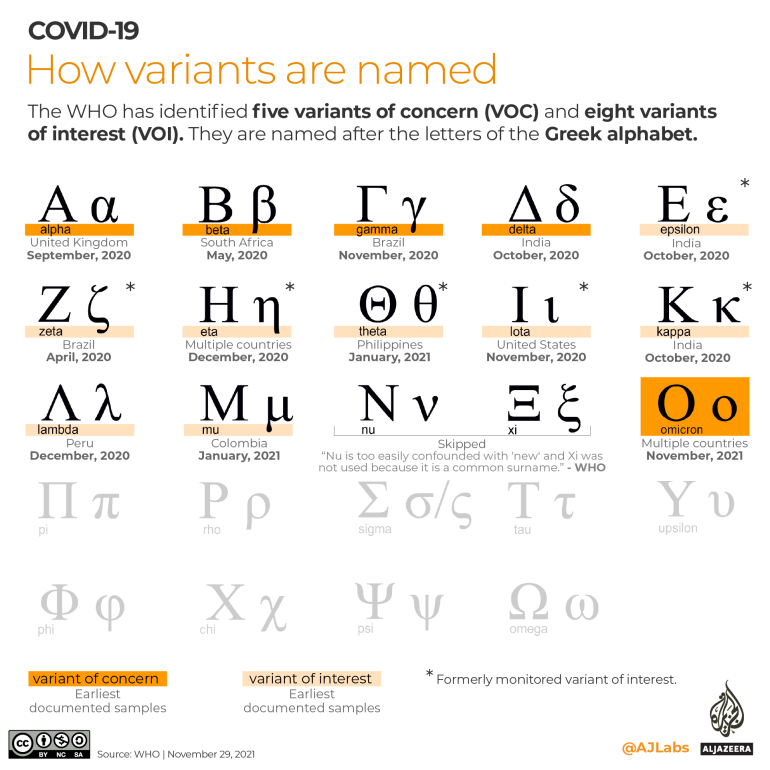30 Nov 2021 By Know Muslim
WHO says preliminary evidence indicates an ‘increased risk of reinfection with Omicron’ compared with other coronavirus variants, but information is limited.
On November 24, 2021, scientists in South Africa reported a new coronavirus variant with a higher number of mutations than were found in other variants. Two days later, the World Health Organization (WHO) said the new variant, dubbed Omicron, was a variant of concern (VOC).
The announcement led many countries to impose travel restrictions.
KEEP READING
All viruses mutate, and the SARS-CoV-2 coronavirus has continued to mutate since it emerged in late 2019. A mutation is a change in a virus’s genetic code, and a mutated virus is known as a variant.
Some coronavirus variants spread more easily than others, which can lead to increases in the rate of infection. A surge in infections can put additional strain on healthcare resources, potentially leading to more hospitalisations and deaths.
Experts believe there are at least 50 mutations on the new variant, with 32 mutations on the spike protein, the part of the virus that enters human cells. Scientists have said that similar mutations seen in other variants have been associated with higher transmission and a higher chance of escaping the body’s immune defences, compared with the original strain of the virus.
Mutations are identified by letters and numbers such as D614G – which means an amino acid changed from a D (aspartate) to a G (glycine) at position number 614 of the viral spike proteins.
The WHO has identified five VOCs and eight variants of interest (VOI). Since May 2021, they have been named after the letters of the Greek alphabet starting with Alpha.
According to this, the next assigned letters were supposed to be Nu then Xi but according to the WHO, “Nu is too easily confounded with ‘new’ and Xi was not used because it is a common surname.”
Instead, the 15th letter, Omicron, was used.

The WHO advises the following steps to protect yourself and prevent the spread of COVID-19.
Date:30-11-2021
Reference: https://www.aljazeera.com/news/2021/11/29/infographic-how-omicron-compares-to-other-covid-variants